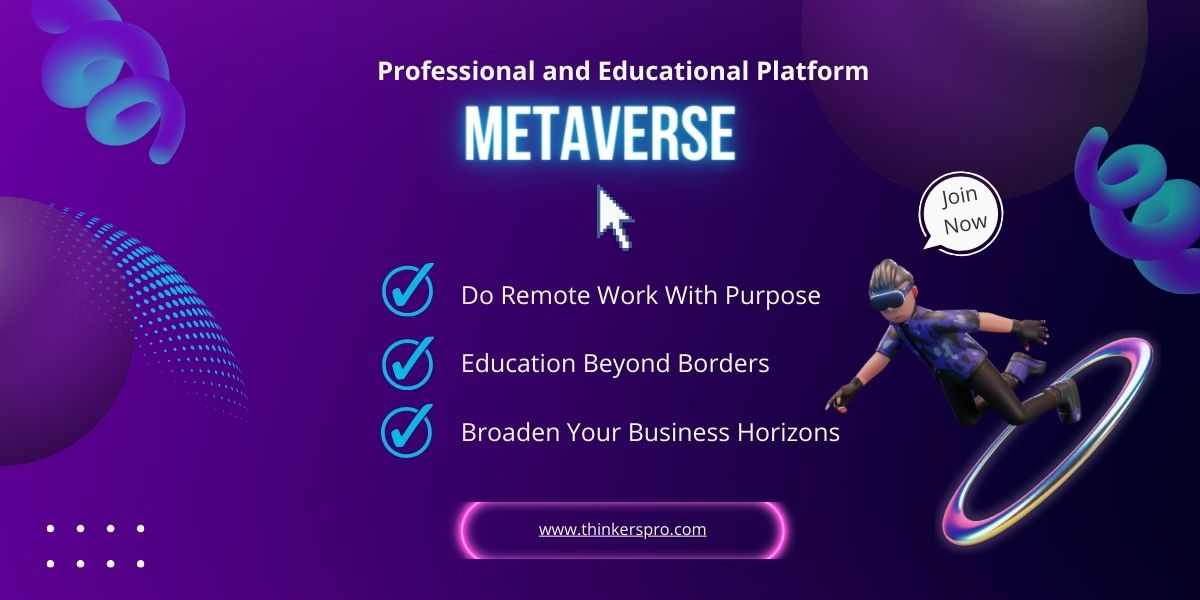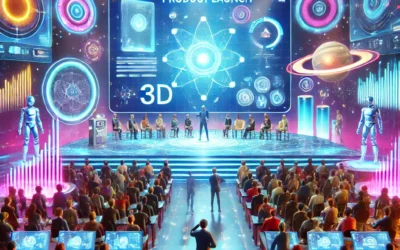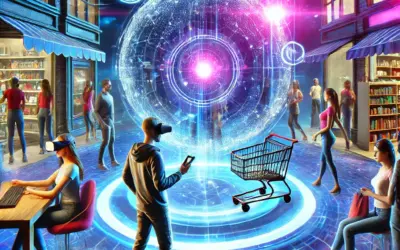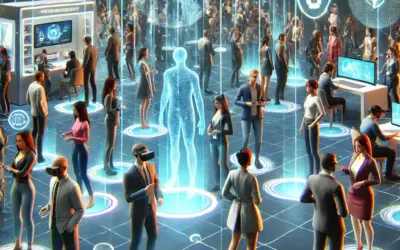Key Features of the Metaverse
- Persistence: Unlike traditional games or online experiences, the Metaverse continues to exist and evolve in real-time, even when users log off.
- Interoperability: Users can transfer assets and data across different platforms, creating a seamless experience.
- User-generated content: Participants can create and monetize their own content, enriching the Metaverse with diverse contributions.
- 3D and immersive experiences: The utilization of VR and AR technologies allows for realistic and engaging interactions.
How the Metaverse Enables Remote Collaboration
The Metaverse facilitates remote collaboration by offering tools and environments that mimic physical workplaces. Teams can gather in virtual meeting spaces where they can interact as if they were in the same room. According to Forbes, companies can build dedicated environments tailored to their business needs, enhancing communication and teamwork through shared digital experiences.
Benefits of Using the Metaverse for Collaboration
- Enhanced Communication: 3D environments foster better non-verbal cues and interactions.
- Global Accessibility: Team members from different geographical locations can unite in a shared space.
- Cost-effectiveness: Reduces the need for travel and physical office spaces, making collaboration more affordable.
- Creative Brainstorming: Immersive experiences facilitate innovative thinking, allowing for brainstorming sessions that feel tangible.
With the rapid progression of technology, the Metaverse is poised to redefine how remote teams collaborate. As organizations look to enhance productivity and engagement, the Metaverse may serve as a critical tool in navigating the modern work landscape.
Key Benefits of Using the Metaverse for Remote Teamwork and Collaboration
The concept of the metaverse has gained traction as a transformative space for remote teamwork and collaboration. As organizations continue to embrace hybrid and fully remote models, leveraging virtual environments to facilitate seamless communication and teamwork has become essential. Here, we’ll explore some of the key benefits of utilizing the metaverse for remote collaboration.
Enhanced Engagement through Immersive Experiences
One significant advantage of the metaverse is its ability to provide immersive experiences that can enhance engagement among team members. Traditional video conferencing often leads to distractions, but within a virtual environment, participants can interact as if they were in the same room. These immersive experiences foster creativity and collaboration, as team members can visualize ideas in 3D and manipulate digital assets collectively. According to a report by Gartner, teams that leverage immersive technology report higher satisfaction rates in collaboration tasks.
Increased Accessibility and Flexibility
The metaverse breaks down geographical barriers, allowing remote teams to come together from anywhere in the world. The advantage of this increased accessibility means that companies can tap into a global talent pool, bringing diverse perspectives and skills to the table. Furthermore, team members can participate on their own schedules, maximizing productivity and minimizing scheduling conflicts. The flexibility offered by this virtual landscape encourages participation from members who may feel disengaged in a traditional work setting.
Real-time Collaboration with Advanced Tools
Collaboration in the metaverse is facilitated by advanced tools that support real-time interaction. These tools enable teams to share files, brainstorm, and conduct workshops in an interactive manner. Features like virtual whiteboards, 3D modeling, and spatial audio create an environment that mimics in-person meetings. According to Forbes, organizations utilizing these tools are experiencing improved project outcomes and expedited decision-making processes. The ability to visualize and discuss concepts dynamically can lead to more innovative solutions and improved team cohesion.
Cost-Effectiveness and Resource Optimization
Utilizing the metaverse for remote teamwork can also translate into significant cost savings. Organizations can reduce overhead costs by minimizing the need for physical office space and in-person meetings. Additionally, virtual environments can host training and onboarding sessions, eliminating the costs associated with travel and accommodations. As noted by Business News Daily, companies that invest in metaverse technologies report a substantial return on investment through enhanced productivity and reduced operational costs.
Top Metaverse Platforms for Enhanced Remote Collaboration: A Comparative Analysis
The rise of remote work has accelerated the need for innovative collaboration solutions. The metaverse offers immersive environments where teams can connect, collaborate, and innovate. This comparative analysis explores the top metaverse platforms that enhance remote collaboration, focusing on their features, strengths, and usability.
1. Meta’s Horizon Workrooms
Meta’s Horizon Workrooms has emerged as a frontrunner in the metaverse space for virtual collaboration. Designed for VR headsets, it provides an interactive experience that mimics a physical office. Key features include:
- High-quality video conferencing
- Virtual whiteboards for brainstorming sessions
- Spatial audio to enhance communication
This platform is particularly effective for teams seeking a hybrid experience, combining the familiarity of face-to-face meetings with the advantages of digital tools. Its robust integration with Meta’s other applications makes it a seamless choice for existing users.
2. Spatial
Spatial stands out for its focus on 3D collaboration, making it suitable for teams needing visual presentations. Unlike traditional video calls, Spatial allows users to create avatars and interact in a shared 3D space. Features include:
- Customizable virtual meeting rooms
- 3D object sharing and manipulation
- Cross-platform access (desktop and VR)
The platform supports collaboration without the constraints of physical space, ideal for designers and creatives working on complex projects requiring visual interaction.
3. Microsoft Mesh
Microsoft Mesh provides a hybrid model that integrates seamlessly with Microsoft 365 applications. Its focus on teamwork and community engagement, combined with its enterprise-level features, makes it a strong contender. Important aspects include:
- Integration with existing Microsoft Teams
- Interactive holograms for real-time collaboration
- Multi-device support, including mobile and AR glasses
This platform stands out for organizations already leveraging Microsoft products, streamlining workflows while enhancing communication and interaction.
4. Virbela
Virbela breaks the mold by creating fully immersive virtual campuses that facilitate collaboration across various sectors. The platform is designed for large groups and includes:
- Virtual offices and event spaces
- Networking capabilities through avatar interactions
- A user-friendly interface for non-tech-savvy users
Virbela is particularly advantageous for educational institutions and enterprises hosting large-scale events, fostering a sense of presence among participants.
5. Gather
Gather offers a unique approach by combining pixels and avatars. Users can customize their spaces and create interactive experiences for meetings and events. Highlights include:
- Customizable spaces for branding
- Interactive activities to engage participants
- Simple user interface for quick onboarding
This platform caters to smaller teams and social settings, focusing on building community while ensuring effective collaboration.
These metaverse platforms provide different features to enhance remote collaboration. Choosing the right one depends on your team’s specific needs, whether focusing on creativity, integration, or immersive experiences.
Best Practices for Implementing Metaverse Solutions in Remote Work Environments
The incorporation of Metaverse solutions into remote work environments promises to revolutionize how we collaborate, innovate, and engage. However, embracing this technology requires careful consideration and strategic planning. Below are the best practices that organizations should adopt while implementing Metaverse solutions effectively in remote workplaces.
1. Ensure Robust Infrastructure
Before diving into the Metaverse, ensure your organization has a solid digital infrastructure. This includes:
- High-speed internet connections
- Powerful hardware to support AR/VR applications
- Secure cloud storage solutions for data management
Organizations must conduct regular assessments of their IT capabilities and invest in necessary upgrades to facilitate seamless Metaverse experiences.
2. Prioritize Employee Training
Successful implementation hinges on employees being well-acquainted with Metaverse technologies. Consider the following strategies:
- Conduct workshops to familiarize staff with Metaverse tools and applications.
- Create tutorial content that demonstrates effective use.
- Encourage collaboration in early-stage projects to foster comfort and expertise.
Empowering employees through training enhances productivity and fosters an innovative culture within the virtual workspace.
3. Foster an Inclusive Environment
Inclusivity is essential in leveraging the full potential of Metaverse solutions. This involves:
- Identifying and mitigating barriers to access for diverse employees.
- Implementing tools that support varied communication styles, such as voice-to-text technology.
- Encouraging diverse participation in virtual meetings and events.
Creating an inclusive Metaverse is not just about equity; it also stimulates diverse ideas and solutions, enriching workplace creativity.
4. Monitor and Evaluate Performance
To measure the effectiveness of Metaverse integration, establish clear metrics for performance evaluation. These metrics can include:
- Employee engagement levels in virtual events
- Collaboration effectiveness using Metaverse platforms
- Overall productivity statistics before and after implementation
Regular data analysis enables organizations to identify areas for improvement and optimize their Metaverse strategies continually.
The Future of Remote Collaboration in the Metaverse: Trends and Predictions
The metaverse is transforming how we experience digital environments, and its impact on remote collaboration is profound. As organizations adapt to hybrid work models, understanding the trends and predictions surrounding the metaverse becomes essential for leveraging its capabilities. This article explores significant aspects of this evolution.
Emerging Technologies Shaping Metaverse Collaboration
Several technologies are driving the future of remote collaboration within the metaverse. Key advancements include:
- Virtual Reality (VR) and Augmented Reality (AR): These technologies create immersive experiences that allow teams to meet in realistic 3D environments, fostering better engagement.
- Artificial Intelligence (AI): AI facilitates smarter interactions by managing workflow, enhancing communication, and providing personalized user experiences.
- Blockchain: Securing data and enhancing transparency in digital interactions, blockchain technology will play a critical role in ensuring trust within virtual collaborations.
These technologies not only revolutionize how teams connect but also redefine the concept of workplace collaboration.
Key Trends in Remote Collaboration within the Metaverse
As the metaverse evolves, several trends are becoming increasingly prominent:
- Decentralized Workspaces: Companies are no longer tied to physical locations, enabling teams to operate from diverse environments worldwide.
- Cross-Platform Collaboration: Seamless integration between different platforms ensures that diverse teams can collaborate without barriers.
- Enhanced Social Interactions: Avatars and virtual spaces facilitate more natural social interactions, promoting team bonding and creativity.
These trends indicate a shift towards more adaptable and inclusive teamwork, expanding the possibilities for businesses.
Predictions for the Future of Remote Collaboration in the Metaverse
Looking ahead, several predictions are poised to shape the future of remote collaboration in the metaverse:
- Widespread Adoption: As companies see the benefits of the metaverse, expect broader integration into everyday work practices.
- Focus on Mental Health: The need for mental well-being will drive the creation of virtual spaces designed for relaxation and social interaction.
- Innovation in Engagement Tools: The development of new tools will enhance collaboration, enabling more effective project management and communication.
These predictions signal an exciting future where remote collaboration is streamlined and enriched by the unique offerings of the metaverse.













0 comentarios